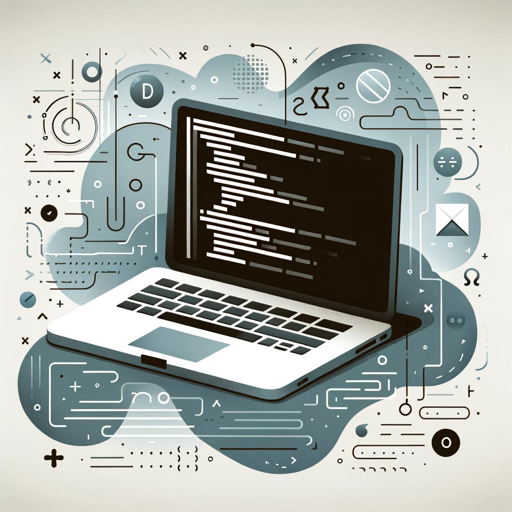Clean Code-code review for better software
AI-powered code quality improvement
Configura un servicio en AWS...
Optimiza esta implementación en Azure...
Escribe un script de despliegue en Python...
Mejora esta aplicación en Angular 17...
Related Tools
Load More
Code Review
An expert software engineer reviewing GitHub pull requests.

JAVA Code Guide
A JAVA Development Assistant focusing on coding standards and quality.

Clean Code Mentor
Elevate your code quality with real-time AI assistance ensuring clarity and maintainability.

C# Code Clean Up
Clean C# code writer.

Java Development and Refactoring Pro
Java expert specializing in code refactoring, Javadoc, bug fixing, and unit testing with JUnit 5 and Mockito.

Data Code Helper
A code-centric assistant for data analysis in Python, SQL, and JavaScript.
20.0 / 5 (200 votes)
Introduction to Clean Code
Clean Code is a set of principles and practices aimed at improving software quality by making code more readable, maintainable, and efficient. Its design purpose is to encourage developers to write code that others can easily understand, modify, and extend. Clean Code emphasizes simplicity, clarity, and avoiding complexity, which reduces the risk of bugs and technical debt. A typical scenario involves refactoring legacy code that’s difficult to maintain. By applying Clean Code principles, such as breaking down large functions into smaller ones and improving variable names, the code becomes more organized and scalable.

Main Functions of Clean Code
Refactoring Legacy Code
Example
Imagine a large function with several hundred lines of code. Clean Code techniques like breaking this down into smaller, well-named functions improve readability and reusability.
Scenario
A team inherits an old codebase that’s difficult to modify. Applying Clean Code practices allows them to restructure the code, reducing complexity and making future enhancements easier.
Improving Readability
Example
Changing variable names from 'x' or 'y' to more descriptive names like 'orderTotal' or 'customerName' instantly makes the code more understandable.
Scenario
A junior developer joins a project and is tasked with fixing bugs. Clean Code practices make it easier for them to follow the logic of the program and contribute more effectively.
Maintaining Consistency
Example
Using a consistent coding style, such as always using camelCase for variables or ensuring functions do one thing well, leads to uniformity across the codebase.
Scenario
In a large project with multiple contributors, applying Clean Code helps ensure that everyone writes code in a consistent style, making collaboration more seamless.
Ideal Users of Clean Code
Software Development Teams
Development teams working on large, collaborative projects benefit the most from Clean Code practices. These teams often face challenges in maintaining code consistency, readability, and scalability. Clean Code principles help ensure that all developers, regardless of experience level, can contribute to a unified, understandable codebase.
Junior Developers and Interns
Junior developers and interns often struggle with understanding complex or poorly written code. Clean Code offers clear guidelines on how to write readable and maintainable code, making it easier for them to onboard and contribute to projects.

How to Use Clean Code
Visit the free trial website
Visit aichatonline.org for a free trial without login or ChatGPT Plus. You can start using Clean Code instantly.
Understand core Clean Code principles
Learn the core principles of writing readable, maintainable, and efficient code. These include naming conventions, avoiding magic numbers, and modularization.
Apply the SOLID principles
Implement the five SOLID principles: Single Responsibility, Open-Closed, Liskov Substitution, Interface Segregation, and Dependency Inversion to improve code structure.
Refactor existing code
Refactor legacy or existing codebases to ensure they follow Clean Code practices such as breaking large functions into smaller ones and reducing code duplication.
Integrate testing and feedback loops
Regularly test your code and seek feedback to improve quality. Utilize unit tests and peer reviews to catch bugs early and ensure code adheres to Clean Code standards.
Try other advanced and practical GPTs
Express.js Programming Expert
AI-powered assistant for Express.js development.

MJ PROMPT GENERATOR
Generate AI-optimized prompts instantly

ㆍYouTube Summaryㆍ
AI-powered tool for quick YouTube summaries

Stats prof
AI-powered statistical assistance for students.

Tesis/Thesis/Thèse/ 论文 , Диссертация, رسالة
AI-powered tool for academic research

Sprite Designer
Create detailed pixel art with AI assistance

C# Code Clean Up
Enhance your C# scripts with AI-powered clean-up

Data Clean Autobot
AI-powered tool for automated data cleaning

Unity Clean Code GPT
AI-powered clean code for Unity

Spring Boot Specialist
AI-powered Spring Boot expert for developers.

Applied Expert System
AI-driven expert insights for every need

Brand Genius
AI-Powered Branding Excellence

- Web Development
- Error Handling
- Code Refactoring
- API Design
- Software Testing
Frequently Asked Questions about Clean Code
What is Clean Code?
Clean Code refers to code that is easy to understand, maintain, and extend. It follows principles such as simplicity, clarity, and modularity to ensure that both current and future developers can work with the code easily.
How can Clean Code help improve team productivity?
By following Clean Code practices, teams reduce the time spent debugging and understanding code, leading to faster development cycles and less technical debt. This results in improved collaboration and fewer errors.
Why are the SOLID principles important in Clean Code?
The SOLID principles provide a foundation for designing systems that are maintainable, scalable, and adaptable to change. They guide developers in structuring code so that it adheres to Clean Code standards.
How does Clean Code handle error management?
Clean Code encourages the use of clear, concise error messages and consistent error handling practices. This includes using exceptions appropriately and ensuring that failure states are well-defined and easy to trace.
Can Clean Code principles be applied to all programming languages?
Yes, Clean Code is language-agnostic. Whether you are coding in Python, JavaScript, or any other language, Clean Code principles can and should be applied to ensure readability and maintainability.